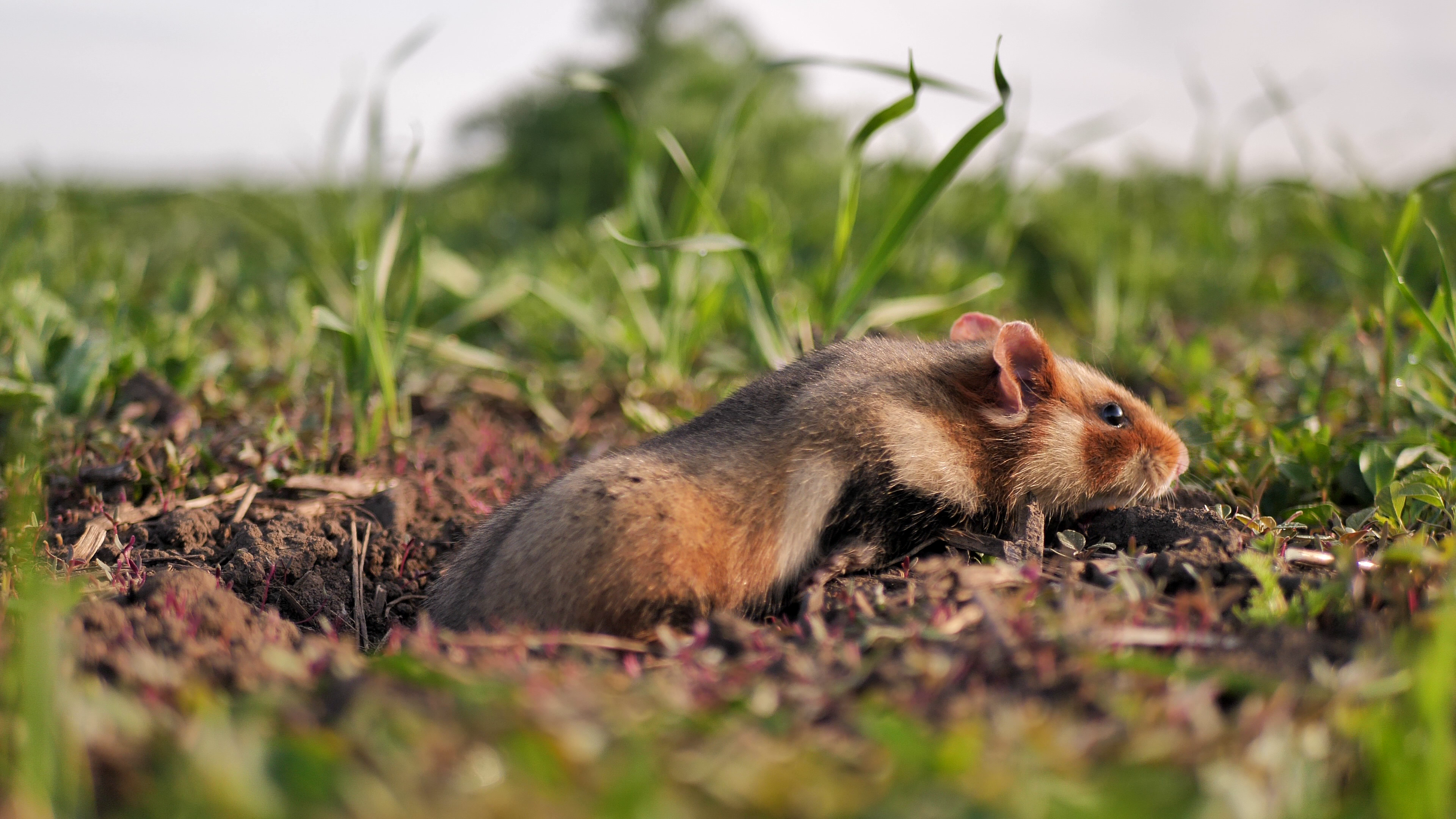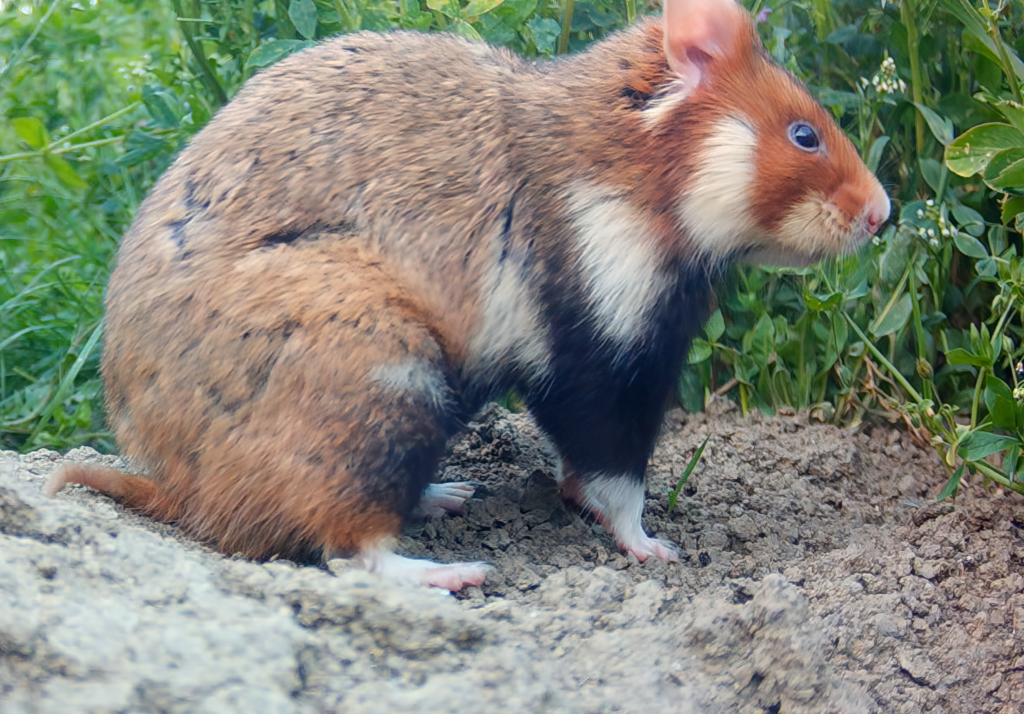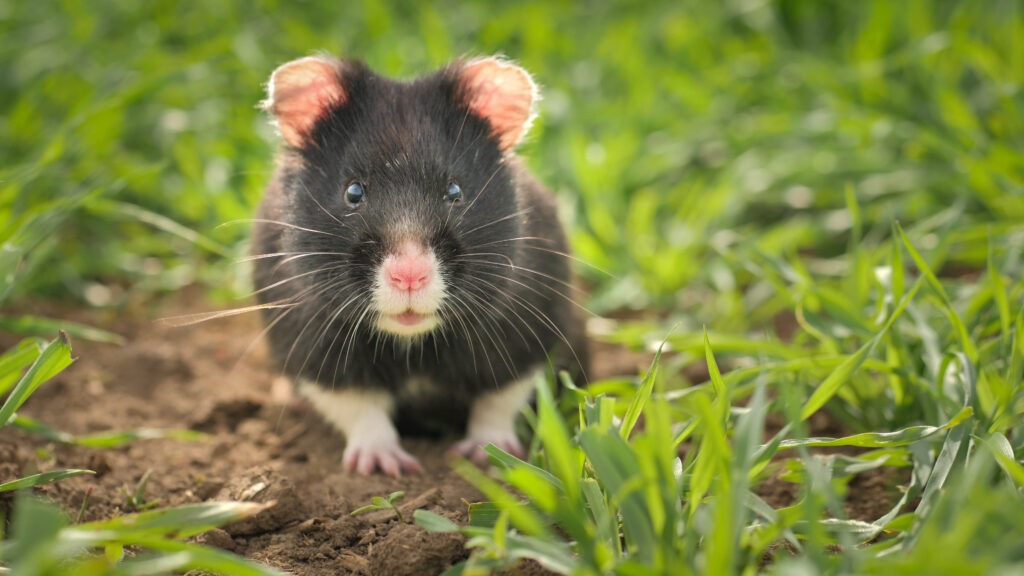The Common hamster is known for its burrows almost as much as it is for hoarding food. But how can you determine a Common hamster’s burrow? We explain what characteristics there are, how not to confuse them with other burrows, and even what indicates whether a burrow is currently inhabited. You will find the most important information with many examples in this video. Learn more in the text.
Data collection during a field Common hamster mapping
Mapping, i.e., searching for hamster burrows, is the standard method of assessing a local population. Mapping is done after the winter burrows open in spring and in summer after harvest, but before any tillage. If a Common hamster burrow is found during this process during a summer burrow mapping one would also search the immediate area within about 3 meters of the burrow to look for additional burrow entrances. Then data collection and measuring of the burrow entrances begins:
- GPS coordinates of the burrow
- Type of burrow: summer burrow or winter burrow
- Diameter and depth of the drop tube
- Number and diameter of sloping tubes
- Is earth excavation at the burrow?
- If necessary, add further remarks on the burrow
Summer and winter burrows
Seasonally, there is a distinction between winter and summer buildings. The two types differ externally in depth and in the number of entrances. Common hamsters survive the cold season underground in the winter burrow at a depth of up to two meters. The only entrance is a drop tube, which is circular and leads vertically straight down. They open this only in the spring after waking.
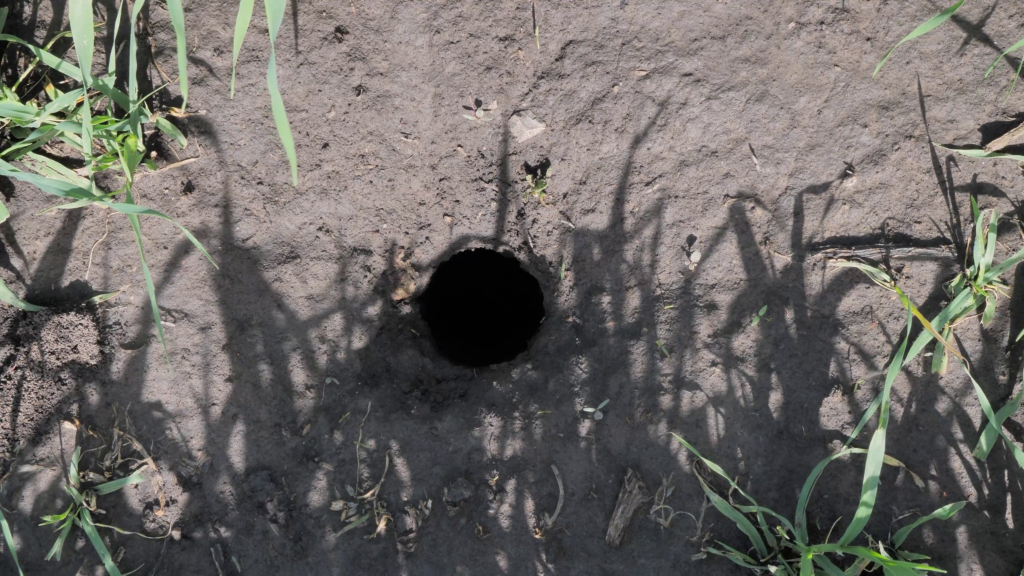
Summer burrows are more variable in the number of entrances and are located somewhat closer to the surface. Usually the drop tubes are between 45 cm or up to one meter deep. In addition to a drop tube, summer burrows have one or more entrances that lead into the burrow at an angle. Thus, a burrow may have several openings, usually no more than 2 to 3 meters apart. The slanted tubes allow the European hamster to carry soil from digging in the burrow and adding chambers to the outside of the burrow. This excavation is visible in front of some slant tubes. However, multiple openings also mean better escape possibilities for the hamster. The Common hamster can also usually only pull larger food into its burrow through the slope tube, e.g., a corn cob or a particularly large turnip.
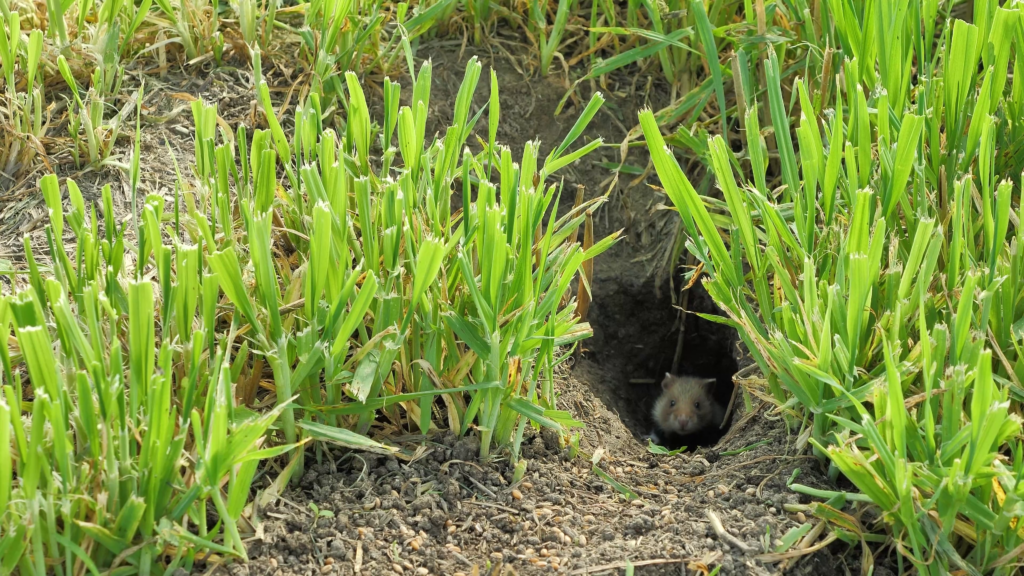
Common hamsters use several burrows over the course of the year. Males use an average of four burrows in summer and females use about two. Burrows are often expanded during the summer. In mother burrows, females raise young in the summer. It is not uncommon for the mother to leave this burrow to one of her offspring and create a new one. The clear distinction between winter burrows and summer burrows also goes back to some extent to the timing of mapping in summer and after winter. In practice, winter burrows can also be extended by entrances and chambers and thus become typical summer burrows.
Differentiation from mice burrows
In Germany, hamster burrows can only be confused with the burrows of other small mammals. The entrances are between 6 and 10 cm for adult common hamsters and 4 to 6 cm for juveniles. Thus, mice burrows are most likely to be confused with those of hamster juveniles. Many species of mice place their retreat closer to the surface than Common hamsters. Entrances are smaller and may be enlarged at the entrance, but then narrow downward. In the Common hamster burrow, on the other hand, the drop tube is circular and goes downward without narrowing. If the entrance of the burrow is covered with many plant parts, this also indicates mice. This is because they cover up their urine, which birds of prey could otherwise see.
Used or abandoned
Thus, Common hamsters use several burrows, which they expand or dig in the summer. Whether a tube is closed with earth or open is not an indicator of whether the burrow is currently inhabited. This is because an inhabitant that has been captured by a predator will leave an abandoned but open burrow. Also, hamsters will close a burrow entrance for short periods of time if they do not want to be disturbed or they prefer other entrances. The following characteristics indicate an inhabited burrow:
- free entrance (not overgrown, full of straw or cobwebs)
- fresh feeding traces near the entrance: nibbled grain, loose still green plant parts
- walking paths
- flies at the entrance
- rarely there is also Common hamster feces near the entrance
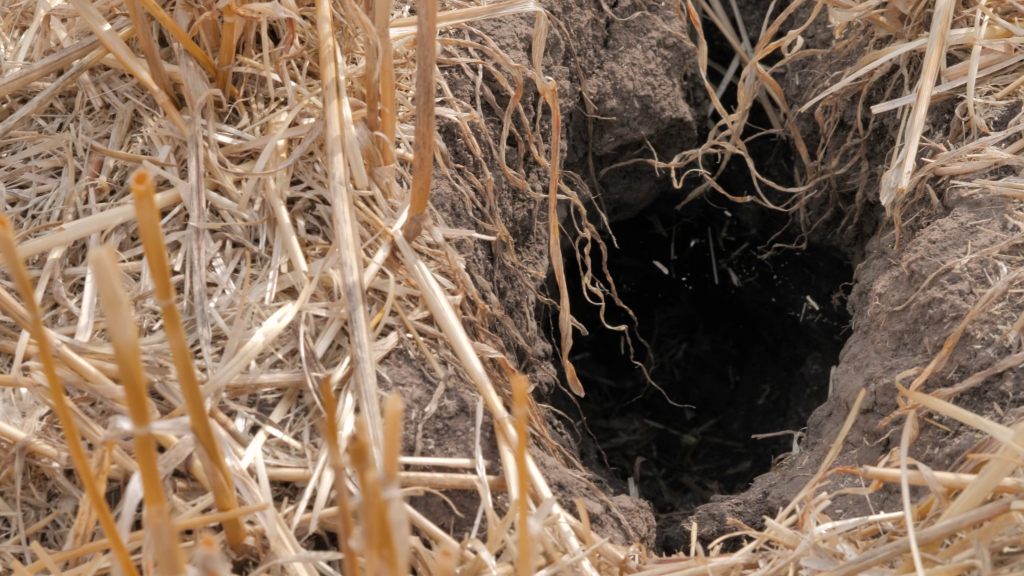
In the case of a burrow that is abandoned or temporarily out of use, the entrance is usually not free:
- overgrown
- full of straw
- covered by cobwebs
- closed
These clues allow experts to guess whether a hamster burrow may be currently occupied. However, some of these clues may also occur if the hamster burrow is being used by another species. For example, weasels, polecats, and many species of mice re-use hamster burrows.
